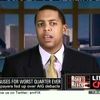
If you are going to chart the progress of your weight loss during a diet, you must first start by facing the music and stepping on the scale. Before you determine where you are going you must know your starting point. The same applies for your finances. Arguably, it is easier for many to step on a scale than to face the hard truth of their financial picture. So here are some measures we must take immediately:
•Go to annualcreditreport.com and get all three free copies of your credit report if you haven't done so already (Equifax, Experian, and Transunion)
•Open all your most recent copies of all your financial statements and place them in front of you. This includes your credit card, brokerage, bank account, credit union, mortgage, or 401K statements.
•Print a copy of a net worth statement (assets minus liabilities) and fill it out as accurately as possible. Do not be discouraged if this number is not large or even negative because you have excessive debt levels. The number is not as important as the progress. Do this exercise twice per year... once during tax time (you are already preparing for your taxes anyway). The second time you should do this is in October or November right before the holiday season (maybe then you won't be as likely to spend as much money buying Christmas gifts).
•If you suffer with the "diminishing checking account," (keep bouncing checks, and can't figure out why), open a new checking account. Make sure that you leave enough in your current checking account to cover any checks that haven't cleared yet and transfer the remainder to the new account. Many banks allow you to use a credit card that will cover all bounced checks. This additional service, along with some sound budgeting solutions, can go a long way in making sure you don't have these negative bounced check marks on your record.
•If you have a computer at home with an Internet connection, use online banking. I wouldn't advocate using a computer that is unsecure to check your bank account because of safety concerns. However, if you do have online access paying bills is faster and monitoring your account balance/activity is easier.
These steps should assist you in developing a solid financial picture. After you have completed these steps you should now possess a feeling of confidence in your finances. Use this confidence and loss of fear of your finances to continue to monitor your financial picture regularly.
